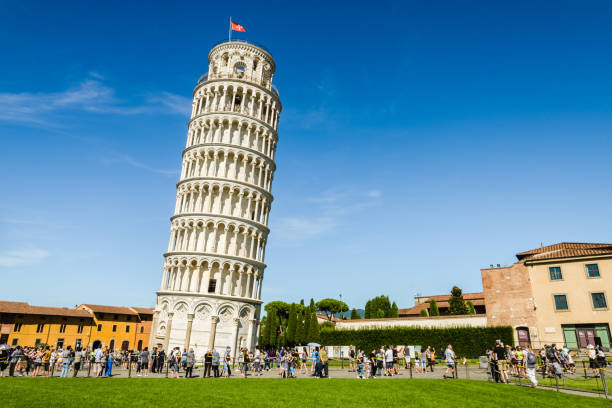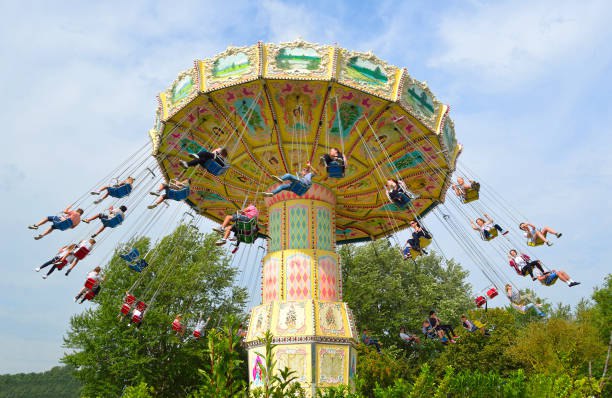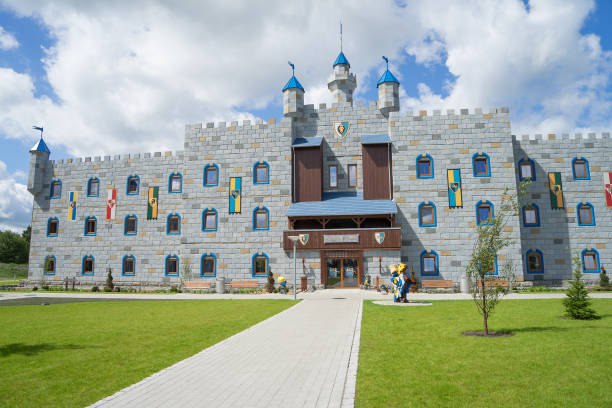The Leaning Tower of Pisa (or Torre Pendente di Pisa) stands in the Piazza dei Miracoli (Square of Miracles), a UNESCO World Heritage Site. Construction began in 1173, taking almost 200 years to complete, finishing in the 14th century. The tower began to lean due to the soft ground on one side during construction, and over time, it became an unintentional marvel. Despite its tilt, the tower remains a symbol of Italy due to its striking beauty and remarkable engineering.
2. What to Expect When Climbing
Climbing the Leaning Tower of Pisa is a memorable adventure. With 294 steps, the climb may seem challenging, but it’s fairly manageable, though steep. The tower’s interior is simple yet impressive, with narrow, winding stone stairs.
Here’s what you’ll experience:
- The Tilt: As you ascend, you’ll feel the tower’s tilt more clearly, especially at the higher levels. The steps are uneven, and the lean may make you feel a bit off-balance, adding to the thrill.
- Narrow Stairs: The stairs can be quite narrow and may feel challenging to navigate, so take your time and be cautious with each step.
- The View: At the top, you'll be rewarded with incredible panoramic views of Pisa, the Piazza dei Miracoli, the cathedral, and the rolling Tuscan countryside beyond.
3. Ticket Information
To climb the Leaning Tower of Pisa, purchasing tickets in advance is essential since only a limited number of visitors are allowed to climb at once. It’s best to book your tickets online ahead of time, especially during the busy tourist season.
Tickets available include:
- Climb the Tower: This ticket includes access to the Leaning Tower and also grants entry to the nearby Cathedral, Baptistery, and Camposanto Monumentale.
- Guided Tours: Opt for a guided tour to gain a deeper understanding of the tower’s history and its unique engineering.
4. The Ideal Time to Visit
To avoid large crowds, it’s recommended to visit the Leaning Tower of Pisa early in the morning or later in the afternoon. The summer months (June to August) tend to be the busiest, so visiting during the spring or fall will provide a more relaxed and enjoyable experience.
5. Dress Comfortably
Climbing the Leaning Tower requires comfortable footwear, as the ascent involves many steps. Avoid wearing heels or shoes with loose straps, as the stone steps can be slippery. Lightweight, breathable clothing is ideal, especially during the warmer months.
6. Why Does the Tower Lean?
The Leaning Tower’s famous tilt is the result of an unstable foundation. The soft, sandy soil on one side caused the tower’s base to settle unevenly, resulting in its characteristic lean. Over the years, extensive restoration and stabilization efforts have been made to secure the tower, and although it still leans, it is safe to climb. Engineers have reduced the tilt to a safer angle.
7. Explore Nearby Attractions
While the Leaning Tower of Pisa is the main draw, the Piazza dei Miracoli offers plenty of other attractions worth exploring:
- Pisa Cathedral (Duomo di Pisa): A remarkable example of Romanesque architecture, this cathedral is an important historical and religious site right next to the tower.
- Baptistery of St. John: Italy’s largest baptistery, famous for its stunning acoustics and intricate marble details.
- Camposanto Monumentale: A beautiful monumental cemetery, filled with breathtaking frescoes and sculptures, often regarded as one of the most picturesque cemeteries in the world.
Discover more about the Tower of Pisa by visiting skyroutetravel.com

 India
India
 Sri Lanka
Sri Lanka




0 comments for this post